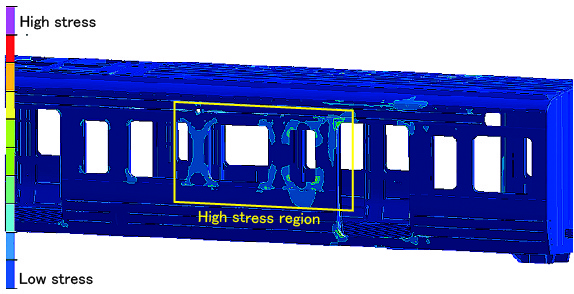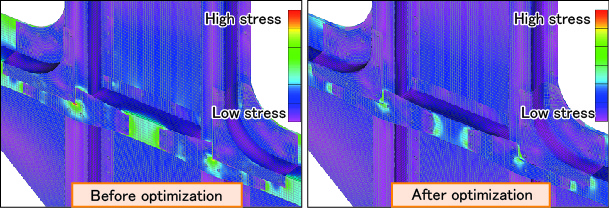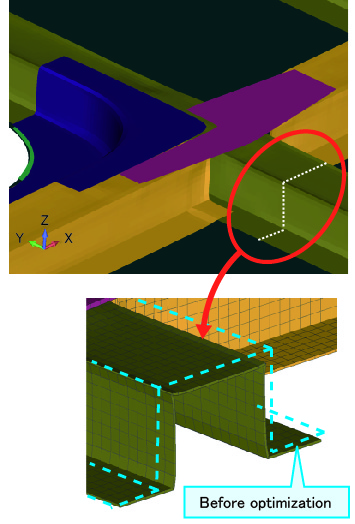2. Increasing carbody shell strength through structural optimization method
- An optimization method for the shape of carbody shells was developed to reduce stress in high-stress regions and the weight of carbody.
- This method allows of the proposals for enhancement of strength and weight saving to carbody shells.
Over recent years, the combined change in requirements for carbody shell crash safety and higher performance levels means that there is strong desire to develop stronger and lighter carbody shells. In view of these considerations, an optimization method for the shape of carbody shells was developed using a whole carbody model.
Stress analyses were conducted using a finite element method on the whole carbody model in order to identify high-stress regions (Fig.1). Once the high-stress areas were identified more detailed models were made of spot welding zones, etc., and a high-precision analytical model was constructed. Next, the optimal structure to achieve both a reduction in stress and weight was sought by optimizing the model shape. Once the optimal structure was obtained, this was then reproduced in the whole carbody model to determine the stress distribution across the overall structure of the modified design, in order to reassess the improvement. Given that there is a trade-off between reducing the weight and increasing the strength of a structure, iterative computing is used to arrive at the optimal solution while satisfying both objectives. Applying the carbody structure optimization process to an existing conventional line train carbody shell, produced a solution which demonstrated that stress could be reduced by 40% (Fig.2) in the area where stress was concentrated, and the weight of the whole carbody could be reduced by 7% (Example in Fig.3) at constant stress conditions.
Aside from reducing stress and weight, this method can be used to evaluate rigidity which in turn can help control high frequency vibration and improve ride comfort. Consequently, this approach can contribute to improving overall existing carbody shell design, while maintaining high rigidity, and reducing the weight of the overall carbody shell.

Fig.1 Single carbody model stress analysis
Fig.2 Optimization of shape in high stress areas

Fig.3 Cross section of carbody frame after optimization (framing of window corner)